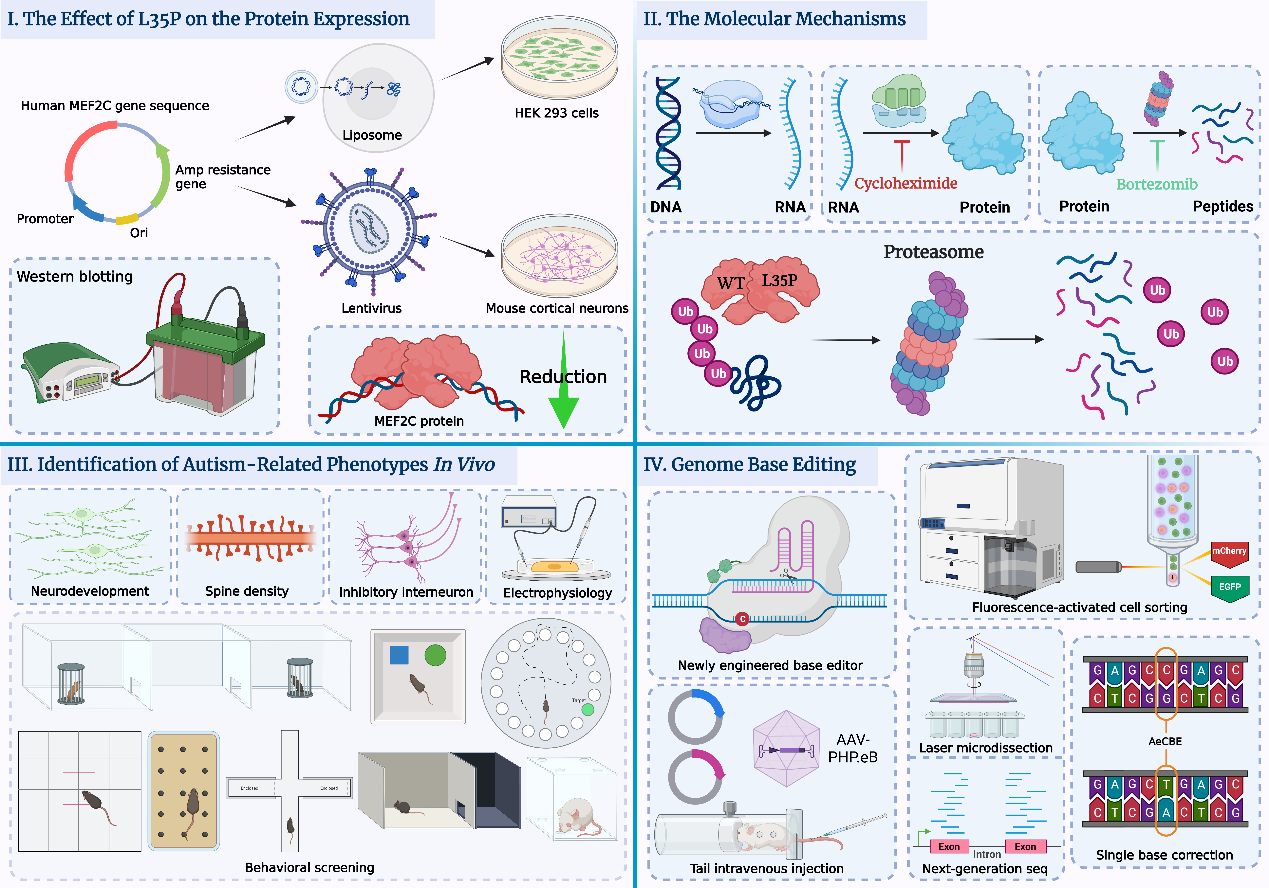Whole-brain genome editing to correct single-base mutations and reduce or reverse behavioral changes in animal models of autism spectrum disorder (ASD) has not yet been achieved. We developed an apolipoprotein B messenger RNA-editing enzyme, catalytic polypeptide-embedded cytosine base editor (AeCBE) system for converting C·G to T·A base pairs. We demonstrate its effectiveness by targeting AeCBE to an ASD-associated mutation of the MEF2C gene (c.104T>C, p.L35P) in vivo in mice. We first constructed Mef2cL35P heterozygous mice. Male heterozygous mice exhibited hyperactivity, repetitive behavior and social abnormalities. We then programmed AeCBE to edit the mutated C·G base pairs of Mef2c in the mouse brain through the intravenous injection of blood–brain barrier-crossing adeno-associated virus. This treatment successfully restored Mef2c protein levels in several brain regions and reversed the behavioral abnormalities in Mef2c-mutant mice. Our work presents an in vivo base-editing paradigm that could potentially correct single-base genetic mutations in the brain.


paper link: https://www.nature.com/articles/s41593-023-01499-x
References:
1.Maenner, M. J. et al. Prevalence and Characteristics of Autism Spectrum Disorder Among Children Aged 8 Years - Autism and Developmental Disabilities Monitoring Network, 11 Sites, United States, 2020. MMWR Surveill Summ 72, 1-14 (2023). https://doi.org:10.15585/mmwr.ss7202a1
2.Zhou, H. et al. Prevalence of Autism Spectrum Disorder in China: A Nationwide Multi-center Population-based Study Among Children Aged 6 to 12 Years. Neurosci Bull 36, 961-971 (2020). https://doi.org:10.1007/s12264-020-00530-6
3.Geschwind, D. H. & Flint, J. Genetics and genomics of psychiatric disease. Science 349, 1489-1494 (2015). https://doi.org:10.1126/science.aaa8954
4.Sanders, S. J. et al. De novo mutations revealed by whole-exome sequencing are strongly associated with autism. Nature 485, 237-241 (2012). https://doi.org:10.1038/nature10945
5.Parikshak, N. N. et al. Integrative functional genomic analyses implicate specific molecular pathways and circuits in autism. Cell 155, 1008-1021 (2013). https://doi.org:10.1016/j.cell.2013.10.031